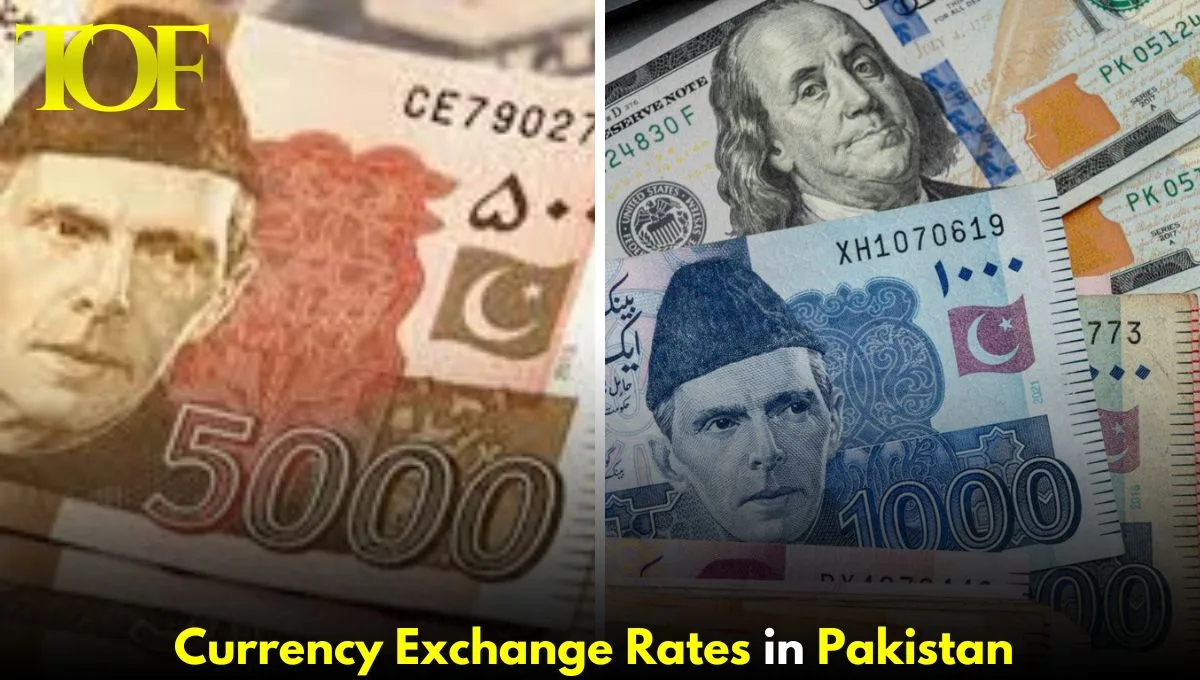Karachi, Oct 17: The Pakistan Currency market commenced today with relatively stable yet dynamic fluctuations in foreign currencies. The rates reflect open market business which reflects the performance of different currencies against the Pakistani rupee.
The PKR has once more witnessed the dollar at the center of attention in the market, buying at PKR 277.9 and selling at PKR 279.4. However, this slight rise in value from the earlier sessions also indicates that the rupee is still vulnerable to the same kind of burdens that are both in global economic conditions and the fiscal troubles facing it at the home front. The dollar also remains a point of interest when it comes to pricing because it acts as a point of influence that decides inflation levels and overall economic stability in Pakistan.
In the international currency markets, the British pound sterling (GBP) is still trading strong against the rupee and it is currently seen trading at PKR 361.3 buying to PKR 364.8 selling. The Euro, another powerful money being used by Pakistan to import-export relevant goods is trading in the PKR at 300.95 buying to PKR 303.7 selling. The rising cost of imported goods from the Eurozone may have serious consequences for trade balances, which in turn can influence inflation and the cost of living in the future.
Among the regional currencies, the rupee of India trades relatively at lower rates due to stability in buying and selling rates pegged at PKR 3.34 and PKR 3.45, respectively. Despite these dynamics, the ongoing economic ties between Pakistan and India, particularly in trade and commerce, continue to mark themselves, and fluctuations sometimes result in affecting regional markets.
Meanwhile, the Australian currency rates stand at PKR 185.75 for buying and PKR 188 for selling, whereas that of Canada stands at PKR 201.6 for buying and PKR 204 for selling. This has massive implications for sectors going to import from these countries as their prices of goods and services are on the increase all over the world.
The Chinese yuan (CNY) has been the most prominent currency in Pakistan’s trade affairs with its leading counterpart, and currently, it is trading at PKR 38.88 for buying and PKR 39.28 for selling. Any fluctuation in the yuan can cause a shock in the agreement of trade deals and economic policies due to the very strategic economic relationship between Pakistan and China.
Remittances being a very important part of their economies, Gulf currencies have pretty much remained unchanged. The Saudi riyal (SAR) is traded at PKR 73.6 for purchasing and at PKR 74.15 for selling while the UAE dirham (AED) is traded at PKR 75.35 for purchasing and at PKR 76 for selling. The Kuwaiti dinar is one of the world’s strongest currencies that is trading at PKR 897.5 for purchasing and PKR 907 for selling.
Market participants and investors are very keen on these forex rates, as economic inflation, oil price sways, and global political tensions are putting the stage alive for currency exchange. Last week’s drop is a very pertinent example of how geographically spread-out economies are interlinked, with external forces continuing to have an impact on local currencies.
This will be a very sensitive gauge of economic stability at a time when the Pakistani economy is facing economic challenges in the form of a ballooning rate of inflation and imbalances in the fiscal budget. Analysts further argue that sustained engagement with international markets combined with proactiveness in the realm of economic policies shall help build a better apparatus for alleviating currency pressures and building a more stable financial order.
Moving forward, businesses and investors will need to be aware of currency trends and the global condition of markets. For instance, the ability to grapple with these complexities will be crucial for Pakistan’s economic resilience. This is because Pakistan seeks to balance its trade deficits while strengthening its stance in international economics.
The growth in the currency exchange rates in Pakistan clearly shows a fair measure of stability, but the persistent economic influences call for close observation. Stakeholders must always have their antennae alert for the changes in the market, to protect the individual and collective interests within this ever-increasing web of the interconnected global financial world.
To Read More: Finance

